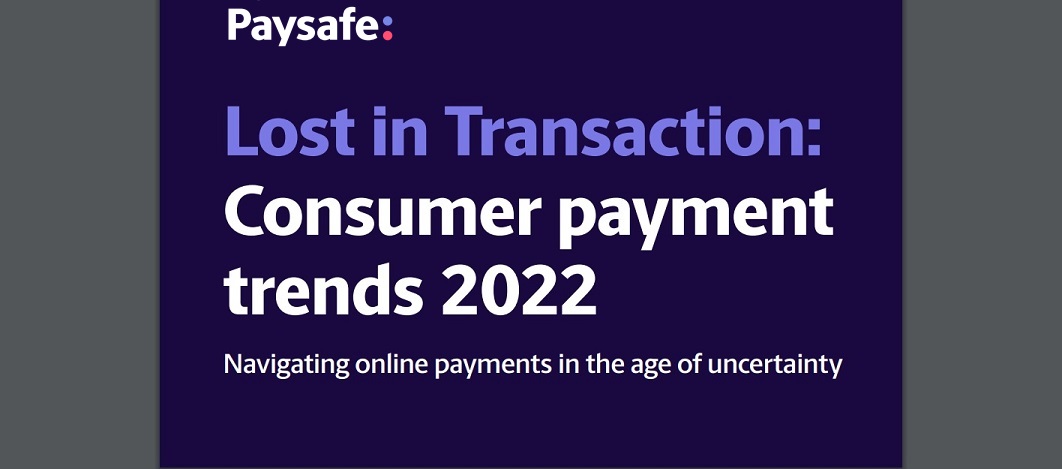
44% of consumers have changed their online payment habits, with a focus on tracking spending more accurately and avoiding buying on credit.
As inflation rates rise across the globe, the resulting ‘cost-of-living crisis’ is forcing changes in consumer payment habits – with a particular focus on methods that help track spending. That’s according to new research* commissioned by leading specialised payments platform, Paysafe, surveying 11,000 consumers across Europe, North America and Latin America for the company’s ‘Lost in Transaction’ report, Consumer payment trends 2022: Navigating online payments in the age of uncertainty.
Nearly half of (44%) respondents have changed their payment habits in response to the rising cost of living, 40% of whom are shifting towards methods that enable them to track spending more accurately and almost a quarter (21%) avoiding buying on credit**.
Of those who changed their payments habits **, 53% are using debit cards more often than a year ago, representing the biggest jump for the most popular online payment method. This is true even in countries where credit cards are more popular, e.g., in Canada where credit cards remain the number one payment type, but debit cards are being used more often than a year ago by 49% of respondents.
Apart from those avoiding buying on credit, credit cards still have appeal – 42% of respondents who have changed their habits are using credit cards more (and 51% of all respondents have used them in the last month) – mostly for high-value purchases. Interestingly, credit card usage has spiked in the traditionally debt-averse DACH region where 46% of Austrian respondents and 39% of German respondents are using them more frequently.
Thanks perhaps to their money management features, digital wallets have also become popular with those who have changed their payment habits because of the rise in cost of living. Two fifths (41%) of such respondents are using them more than they did a year ago.
While debit cards, credit cards and digital wallets remain the most popular payment methods, cash is also seeing a resurgence, particularly online. Cash usage dipped in 2020 due to the pandemic, but fast forward to 2022 and while 52% said they’re using it less for in-person transactions, 70% said they’d be worried if they could no longer access cash, and 59% still think it is the most reliable form of payment.
47% of respondents told us they would prefer to pay for online purchases in cash if it were easy, and 44% would buy online more often if they could pay in cash. Overall, 13% are using eCash more often than they were 12 months ago (three times on average in the previous month) – increasing to 26% of those who changed their habits due to the cost-of-living crisis.
Chirag Patel, CEO of Paysafe’s Digital Wallets division, comments, “With fuel and food prices at an all-time high, our findings clearly show households globally are changing their payment methods to keep a closer eye on how much they’re spending. While the use of many traditional payment types is on the rise, we’re also seeing a spike in alternative methods such as digital wallets and a shift to eCash. To support consumers during this time, and grow customer loyalty, merchants should focus on offering a broad range of payment methods that reflect consumers’ wish for greater control and flexibility. For this to be possible, it’s important to work with the right payments provider which supports a broad range of options to ensure they are set up to cater to changing needs at this time of uncertainty and provide consumers with as much choice as they can.”
For additional key takeaways from the research, as well as further analysis, download the full report Lost in Transaction: Consumer payment trends 2022: Navigating online payments in the age of uncertainty.
____________
* The survey was conducted among 11,000 consumers (representative by age and gender) in the U.S. (2,000), UK, Canada, Germany, Austria, Bulgaria, Italy, Peru, Chile, and Barzil (all 1,000). The interviews were conducted online by Sapio Research in April 2022 using an email invitation and an online survey.
**Unless otherwise specified all data points about increased/decreased payment method usage relate to respondents whose habits have changed due to the increase in cost of living.
With over 20 years of online payment experience, an annualised transactional volume of over US $120 billion in 2021, and approximately 3,500 employees located in 10+ countries, Paysafe connects businesses and consumers across 100 payment types in over 40 currencies around the world.
Banking 4.0 – „how was the experience for you”
„To be honest I think that Sinaia, your conference, is much better then Davos.”
Many more interesting quotes in the video below: